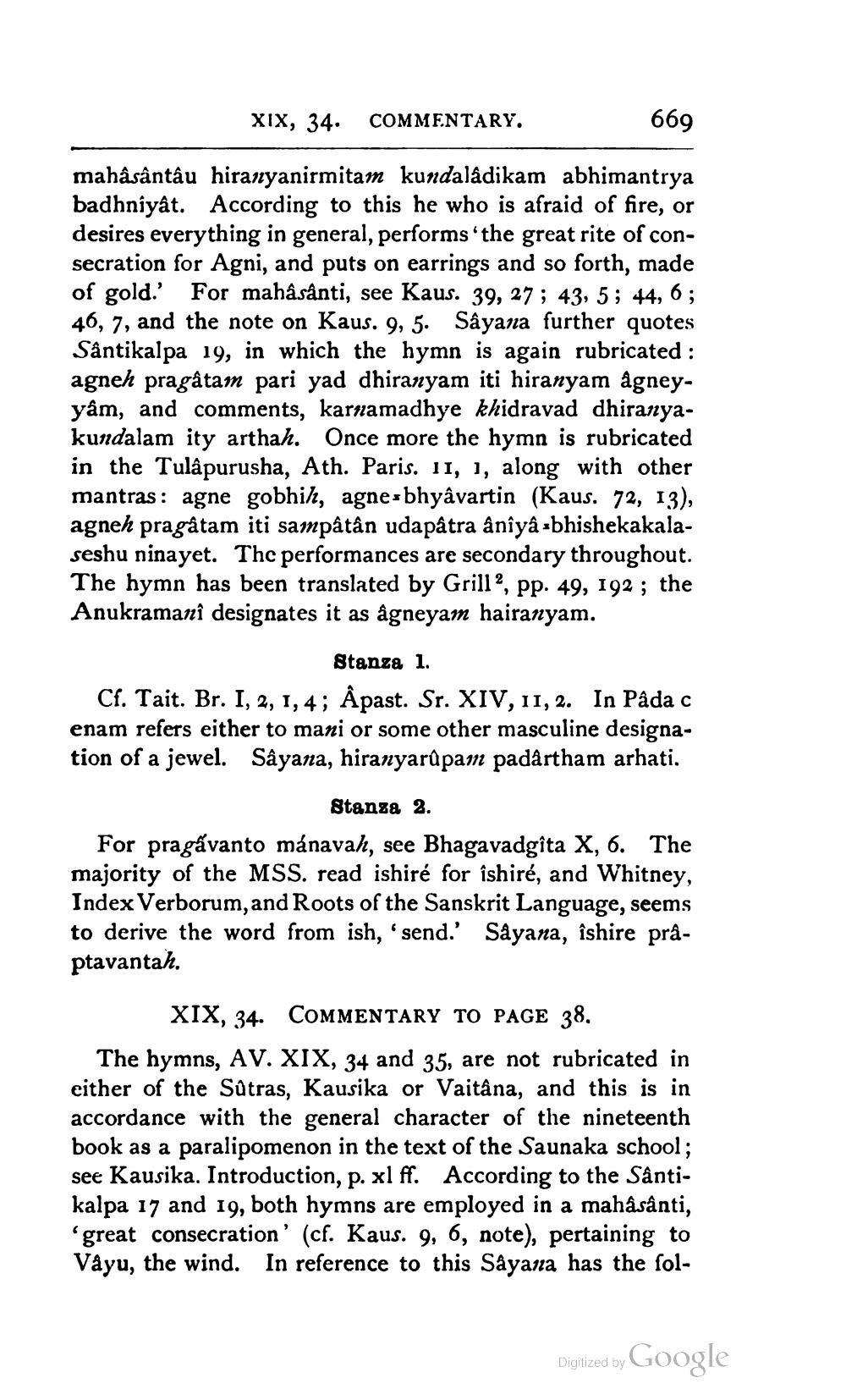________________
xix, 34. COMMENTARY.
669
mahâsântâu hiranyanirmitam kundalâdikam abhimantrya badhniyât. According to this he who is afraid of fire, or desires everything in general, performs 'the great rite of consecration for Agni, and puts on earrings and so forth, made of gold. For mahâsanti, see Kaus. 39, 27; 43, 5; 44, 6; 46, 7, and the note on Kaus. 9, 5. Sâyana further quotes Såntikalpa 19, in which the hymn is again rubricated : agneh pragatam pari yad dhiranyam iti hiranyam agneyyâm, and comments, karnamadhye khidravad dhiranyakundalam ity arthah. Once more the hymn is rubricated in the Tulâpurusha, Ath. Paris. II, 1, along with other mantras: agne gobhil, agnesbhyâvartin (Kaus. 72, 13), agneh pragâtam iti sampâtân udapâtra ânîyâ-bhishekakalaseshu ninayet. The performances are secondary throughout. The hymn has been translated by Grill?, pp. 49, 192 ; the Anukramanî designates it as ágneyam hairanyam.
Stanza 1. Cf. Tait. Br. I, 2, 1, 4; Åpast. Sr. XIV, 11, 2. In Pâda c enam refers either to mani or some other masculine designation of a jewel. Sâyana, hiranyarûpam padártham arhati.
Stansa 2.
For pragávanto mánavah, see Bhagavadgita X, 6. The majority of the MSS. read ishiré for ishiré, and Whitney, Index Verborum,and Roots of the Sanskrit Language, seems to derive the word from ish, send.' Sayana, îshire prâptavantah.
XIX, 34. COMMENTARY TO PAGE 38. The hymns, AV. XIX, 34 and 35, are not rubricated in either of the Sûtras, Kausika or Vaitâna, and this is in accordance with the general character of the nineteenth book as a paralipomenon in the text of the Saunaka school; see Kausika. Introduction, p. xl ff. According to the Sântikalpa 17 and 19, both hymns are employed in a mahâsânti, 'great consecration' (cf. Kaus. 9, 6, note), pertaining to Våyu, the wind. In reference to this Sâyana has the sol
Digized by Google




